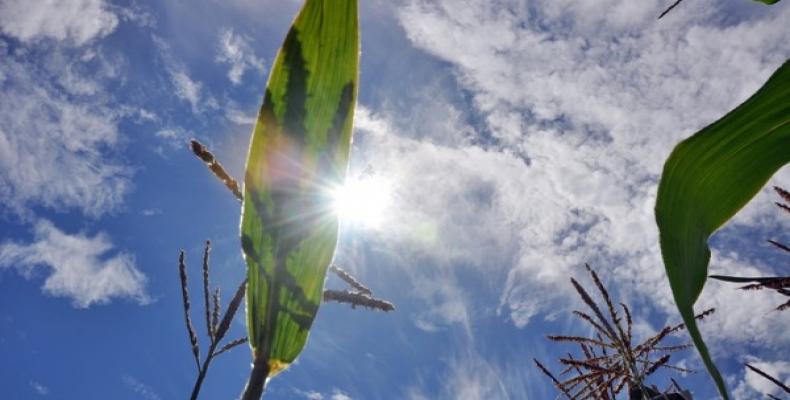Stanford, CA, November 13 (RHC) A team of scientists have discovered a protein called KEA3 which is crucial for immediate adjustment of photosynthetic efficiency in fluctuating light conditions and may be a main focus for those interested in improving crop productivity, as well as for advancing basic knowledge of photosynthetic biochemistry, according to a research published in Nature Communications Journal on Nov. 13.
Photosynthesis is the process by which plants convert energy from sunlight into chemical energy in the form of sugars. These sugars are used by plants to grow and function, as well as food for animals and humans that eat them.
Plants grow in environments where the availability of light fluctuates quickly and drastically, for example from the shade of clouds passing overhead or of leaves on overhanging trees blowing in the wind. Plants thus have to rapidly adjust photosynthesis to maximize energy capture while preventing excess energy from causing damage.
So how do plants prevent these changes in light intensity from affecting their ability to harvest the energy they need to survive? The response has to be extremely swift. A team of researchers led by Carnegie’s Ute Armbruster and Martin Jonikas revealed a mechanism by which plants maintain high photosynthetic efficiency in fluctuating light.
Many photosynthetic organisms globally, including crops, forests and algae, must grow in environments where the availability of light energy fluctuates dramatically. How photosynthesis maintains high efficiency despite such fluctuations in its energy source remains poorly understood.
The question of how photosynthetic efficiency is maintained affects plants on which humans depend, including crops and even forests, so answering this question has practical implications for improving agricultural productivity.
The team, which also includes Carnegie’s Ari Kornfeld and Joseph Berry, show that Arabidopsis thaliana K+ efflux antiporter (KEA3) is critical for high photosynthetic efficiency under fluctuating light. On a shift from dark to low light, or high to low light, kea3 mutants show prolonged dissipation of absorbed light energy as heat. KEA3 localizes to the thylakoid membrane, and allows proton efflux from the thylakoid lumen by proton/potassium antiport. KEA3’s activity accelerates the downregulation of pH-dependent energy dissipation after transitions to low light, leading to faster recovery of high photosystem II quantum efficiency and increased CO2 assimilation. The reseach results reveal a mechanism that increases the efficiency of photosynthesis under fluctuating light.
Photosynthesis takes place in stages. The first stage absorbs light in the form of photons and uses it to produce energy storage molecules, which are then used to power the second stage, which fixes carbon from the air into carbon-based sugars, such as sucrose and starch. KEA3 is concerned with the first stage.
Under full sunlight, the energy from excess absorbed photons is intentionally dissipated by the plant as heat. But if the incident light is blocked by a cloud, the plant must switch from dissipating excess photons as heat to harvesting as many photons as possible. Advanced analytical techniques demonstrated that KEA3 acts to accelerate the switch from the full-sunlight-adapted mode to the shade-adapted mode. This rapid response to light intensity makes the first stage of photosynthesis more efficient.
Mutant plants without functioning KEA3 transporters lost a great deal of harvested light energy as heat during a transition to low light, further underpinning their finding.
“Our discovery of this built-in machinery for responding to light conditions makes KEA3 a new target for those interested in improving crop productivity, as well as for advancing basic knowledge of photosynthetic biochemistry,” Jonikas said.
This project was funded by the Carnegie Institution for Science, by ERDF-cofinanced grants from the Ministry of Economy and Competitiveness and Junta de Andalucia, the Natural Sciences and Engineering Research Council of Canada PGS-D3 scholarship, and Deutsche Forschungsgemeinschaft grants.


